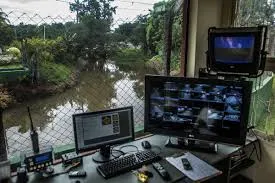Definition: Streamflow analysis involves examining historical data on the flow rate of water in a stream or river over time. This data is used to understand various aspects of the stream's behavior and predict future flow patterns.
Click the Translate button(see right) on this post to set your Own Language to understand more perfectly!!
Streamflow Analysis Calculator
Streamflow Analysis Calculator
Continue Definition:
Streamflow Analysis
Streamflow analysis involves examining historical data on the flow rate of water in a stream or river over time. This data is used to understand various aspects of the stream's behavior and predict future flow patterns.
Here's a breakdown of the key terms:
Streamflow Data (Q): This is a series of comma-separated values representing the flow rate of water in the stream at specific times. It's typically measured in cubic meters per second (m³/s) or cubic feet per second (cfs). (Sample value: A comma-separated list might look like: 10, 12, 8, 15, 7, 18, ... m³/s, representing flow rates measured every hour).
Flood Threshold (Q_f): This is a specific flow rate value that, if exceeded, indicates a flood event. It's determined by considering factors like channel capacity, historical flood data, and acceptable risk levels. (Sample value: The flood threshold for a particular stream might be set at 50 m³/s based on its channel capacity and past flood history).
Analysis Techniques:
Streamflow analysis can involve various techniques to gain insights from the data. Here are some common examples:
Statistical Analysis: This involves calculating descriptive statistics like mean, median, standard deviation, and percentiles to understand the central tendency and variability of the flow rates.
Flow Duration Curve: This is a graphical representation showing the percentage of time specific flow rates are equaled or exceeded. It helps visualize the frequency of different flow conditions.
Flood Frequency Analysis: This method uses historical data to estimate the probability and magnitude of future flood events.
Time Series Analysis: Advanced techniques can be used to identify patterns and trends in the flow data over time, potentially helping predict future variations.
Example:
Imagine you have a year of hourly streamflow data for a stream. You're interested in analyzing potential flood risks.
Data Exploration:
Calculate basic statistics: Find the average flow rate (mean), the most frequent flow rate (median), and the spread of the data (standard deviation).
Visualize the data: Plot the flow rate vs. time series to see seasonal variations or any significant flow events.
Flood Threshold Determination:
Consider historical flood data for the stream, if available.
Analyze the channel capacity of the stream to understand its ability to handle flow.
Based on these factors, set a flood threshold (Q_f) that represents a flow rate exceeding a desirable risk level.
Flood Frequency Analysis:
Use specialized software or statistical methods to analyze the historical data and estimate the probability of exceeding the flood threshold (Q_f) in a given year.
Benefits of Streamflow Analysis:
Flood Risk Assessment: Helps identify areas susceptible to flooding and plan mitigation strategies.
Water Resource Management: Provides insights for efficient water allocation for irrigation, hydropower generation, and other purposes.
Environmental Monitoring: Tracks changes in streamflow patterns that might indicate environmental disruptions.
By understanding streamflow data and applying appropriate analysis techniques, valuable information can be gleaned for water resource management, flood risk reduction, and environmental protection.
How it is Possible To Earn Using The Knowledge of Channel Capacity Calculation In Real Life?????
The knowledge of streamflow analysis can be a valuable asset for earning a living in several fields related to water resources and environmental management. Here's how:
Hydrology/Water Resources Engineering: This is the primary field where streamflow analysis is crucial. Hydrologists and water resources engineers use these skills for:
Floodplain Management: They analyze streamflow data to assess flood risks and design flood control structures like levees or diversion channels.
Water Supply Planning: Understanding historical flow patterns helps plan for future water needs and ensure sustainable water usage.
Hydropower Generation: Streamflow analysis is used to predict water availability for hydropower plants and optimize their operation.
Environmental Impact Assessments: These assessments often involve analyzing the potential impact of development projects on streamflow patterns.
Environmental Science/Consulting:
Environmental Monitoring: Environmental scientists use streamflow analysis to monitor the health of waterways and detect any changes that might indicate pollution or ecological imbalances.
Climate Change Impact Studies: Understanding historical flow patterns helps assess how climate change might affect future streamflow and water resources availability.
Government Agencies:
Water Management Authorities: These agencies rely on streamflow analysis for water allocation, flood forecasting, and developing water management policies.
Environmental Protection Agencies: They utilize streamflow data to monitor water quality and enforce environmental regulations.
Beyond Specific Jobs:
The knowledge of streamflow analysis equips you with valuable transferable skills that benefit various fields:
Data Analysis: You'll be adept at handling and analyzing large datasets, a skill valued across many disciplines.
Problem-solving: Analyzing flow data and using it to solve real-world problems like flood risk reduction is a key strength.
Technical communication: Effectively communicating complex water resource concepts to stakeholders and the public is essential.
Earning Potential:
Salaries in these fields vary depending on experience, location, and the specific employer. However, professionals with expertise in streamflow analysis and water resources management can generally command good salaries.
Overall:
The knowledge of streamflow analysis positions you for a rewarding career in water resources management, environmental fields, and government agencies. It plays a crucial role in ensuring sustainable water use, mitigating flood risks, and protecting our water resources.
Do YOU Want To Earn Money In Various Ways, Click The Link & Explore Your Field of Interest!!!








No comments:
Post a Comment